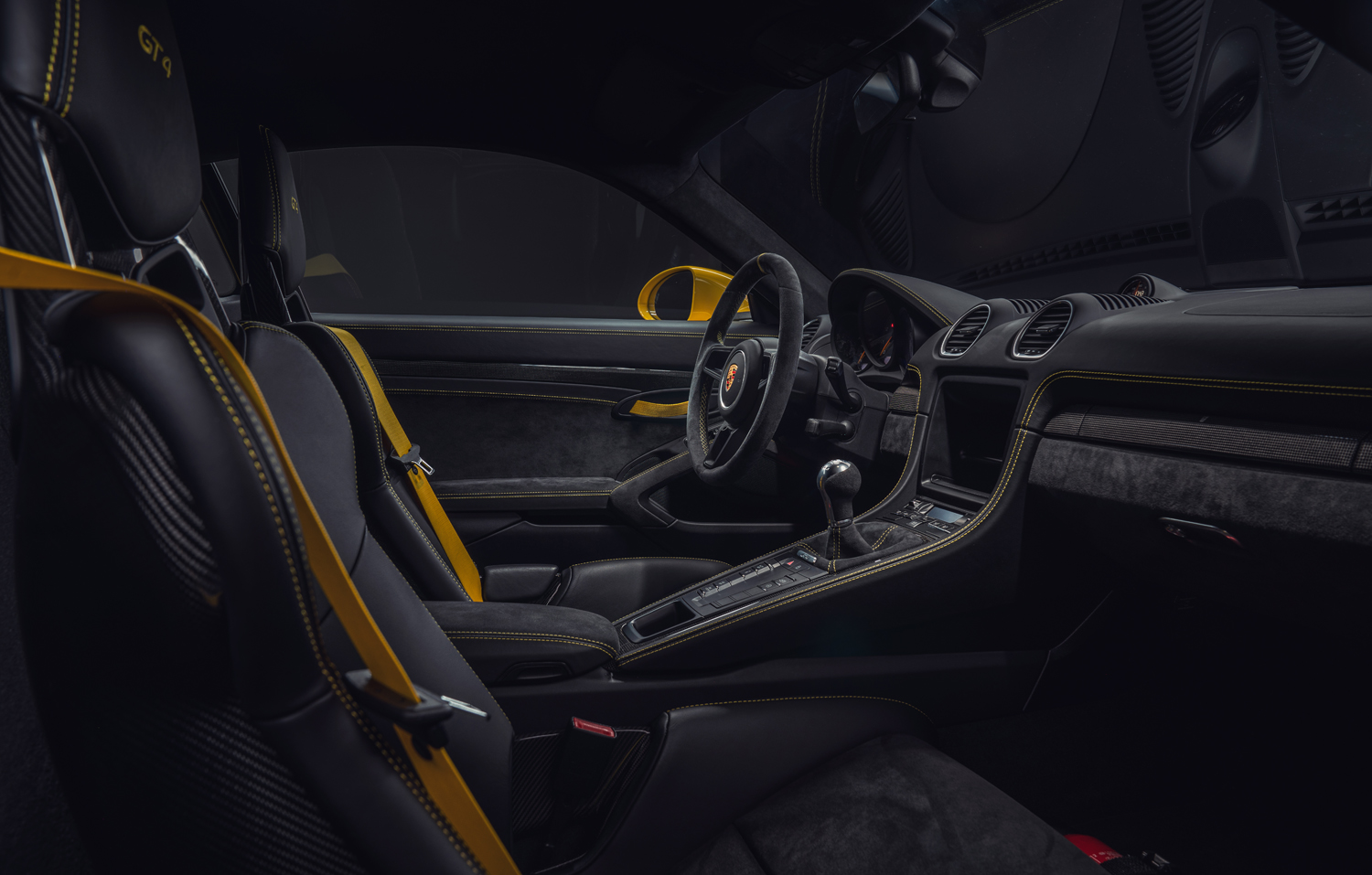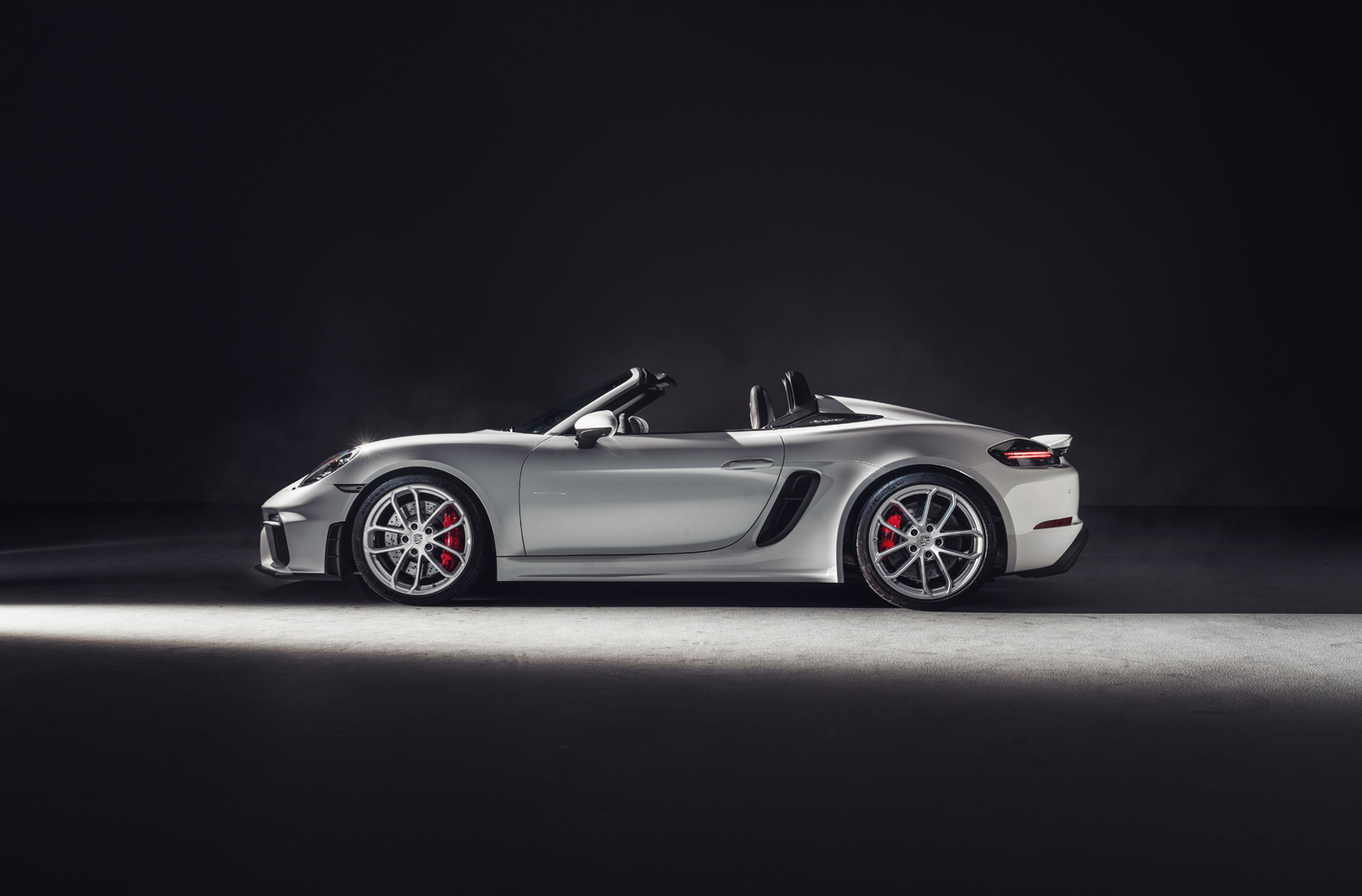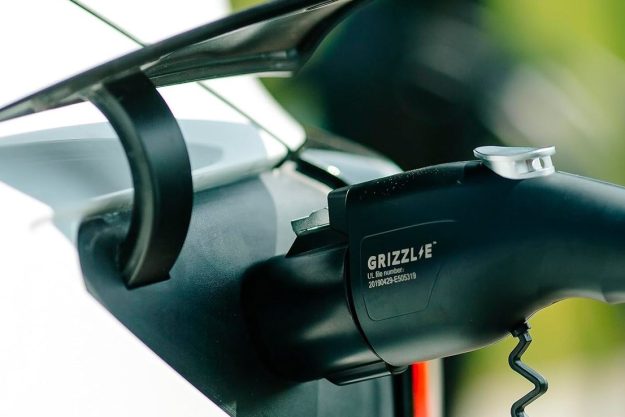Porsche triumphantly brought the flat-six engine back to the 718 Cayman and the 718 Boxster to create a pair of range-topping, track-ready performance cars. Named 718 Cayman GT4 and 718 Spyder, respectively, the mid-engined duo were designed for enthusiasts who want the ultimate in aural, visual, and physical driving enjoyment.
Porsche tapped into its Motorsport department’s vast expertise to create the special 718s. In lieu of the turbocharged flat-four that powers the tamer models, the GT4 and the Spyder receive a naturally aspirated, 4.0-liter flat-six tuned to deliver 414 horsepower and 309 pound-feet of torque. It revs to 8,000 rpm, exhales through a special exhaust, and spins the rear wheels through a six-speed manual transmission. Want an automatic? Sorry, but you’re out of luck.
The GT4 and the Spyder are identical under the sheet metal. Porsche added a model-specific suspension that’s firmer and lower than normal to deliver a more dynamic driving experience with less lean in corners. Enthusiasts who take suspension tuning seriously can manually adjust a number of settings, including the ride height. The front axle and the brakes both come from the 911 GT3, which is an excellent model to share parts with; Digital Trends called it “one of the best sports cars of all time” after putting it through its paces in the hills above Los Angeles.
Porsche’s design department ensured the six-cylinder 718s look as mean as they sound. Both receive a body kit that adds bigger air dams chiseled into the front bumper, a splitter, side skirts, and a wide air diffuser embedded into the rear bumper. The Cayman GT4 goes the extra mile with a manually adjustable rear wing.
The GT4’s driver-first attitude earned it a pair of sport seats with aggressive side bolsters, and a short-throw shifter for the six-speed stick. The Spyder receives the same parts. Neither is a stripped-out track special, though. They come standard with air conditioning and a touchscreen-based infotainment system. Apple CarPlay is offered at an extra cost, but Porsche doesn’t offer Android Auto.
Both 718 models are available to order now, but buyers will need to wait until the spring of 2020 to take delivery. Pricing for the 718 Spyder starts at $96,300; the 718 Cayman GT4 carries a base price of $99,200. Neither figure includes a mandatory $1,250 destination charge. Those numbers place the 718s well into 911 territory, but they’re certain to appreciate in value as they age due to their relative rarity, and their special positioning in the Porsche family.
Porsche told Digital Trends that production of both six-cylinder 718s is only limited by its factory’s manufacturing capacity; neither is a limited-edition model. However, the company expects demand will outpace supply.
Editors' Recommendations
- Porsche’s second electric model is a sports car in hiking boots
- Hybrid model will be ‘highest performance 911 of all,’ Porsche CEO says
- Porsche’s updated 911 gets the one thing it was missing: A manual transmission
- The 2020 Porsche Taycan EV has more screens than a 718 Boxster has cylinders
- Porsche Taycan battery pack has foot garages to make the car hug the road better














